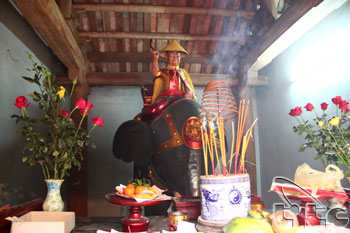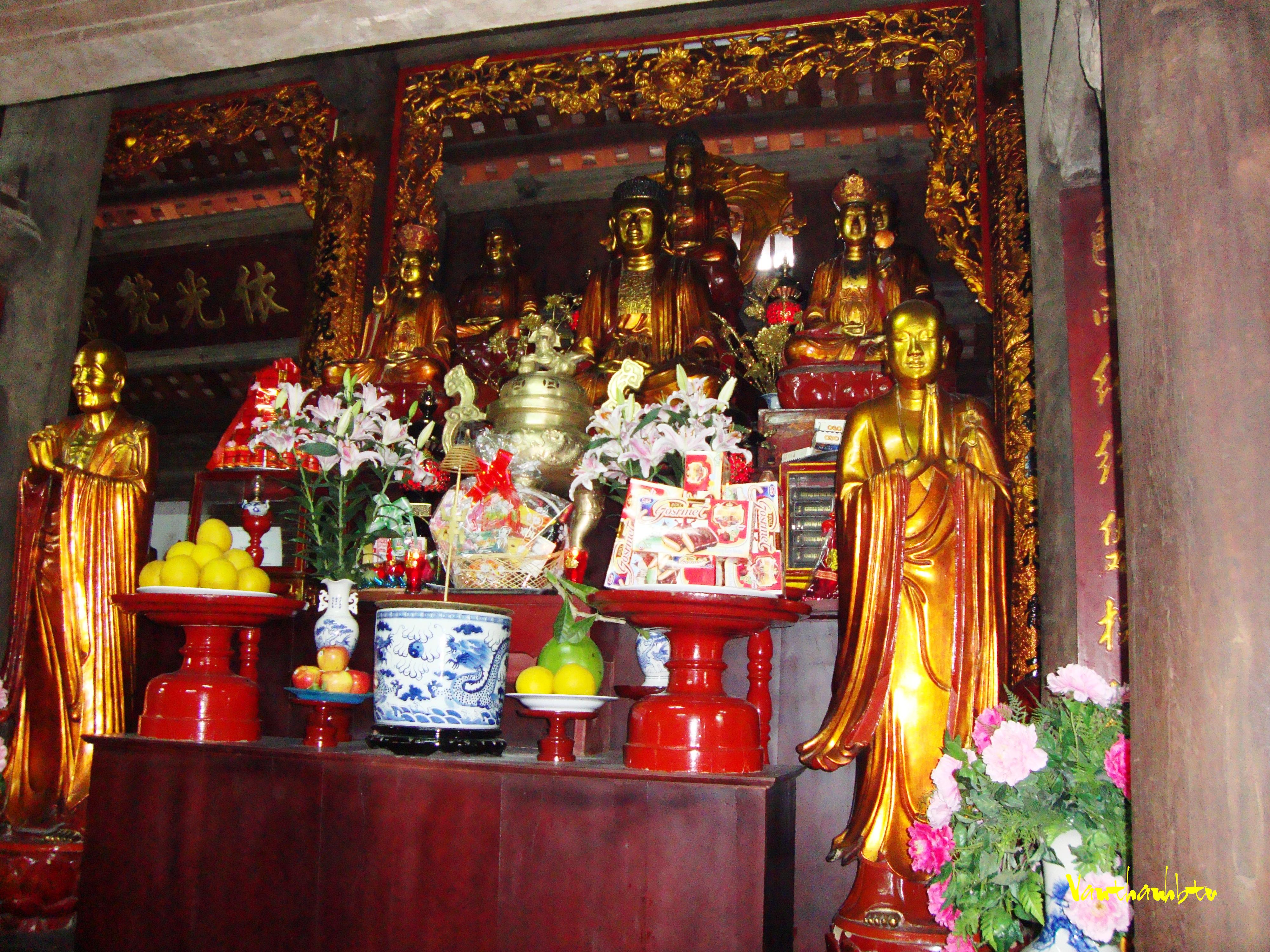Thang Long’s four guardian god temples have vital locations in Hanoi – the 1,000 year old capital. The four temples were built as soon as King Ly Cong Uan established the country’s capital in Thang Long (now Hanoi). They also reflect the position and scale of the capital and the way Ly Cong Uan ruled and built our country with his developmental directions.
Archeological and historical documents prove that Thang Long was a huge citadel which was surrounded by a long dyke. The dyke was designed to prevent invaders and floods. On the dyke was built four temples which worshiped four guardian gods including Bach Ma Temple (in the east), Quan Thanh Temple (in the north), Voi Phuc Temple in the west) and Kim Lien Temple in the south). They are called Thang Long’s four guardian god temples.
The temple is located in Kim Lien Village, Phuong Lien Ward, Dong Da District in the south of Hanoi. The temple has been destroyed; however, the important relic of a 2m stele with a poem named “Cao Son Dai Vuong Than Tu Bi Minh Tinh Tu” composed in 1510 honoring the Cao Son God was still maintained in a small temple under an old banyan tree. The temple was built on the left of Kim Lien Village’s communal house on a hillock. To go from the yard to the temple, people had to climb nine brick stairs. This was similar to the construction of the Kinh Thien Palace in the Thang Long Citadel. In front of the yard is a gate with two square bronze pillars near a small spring. This was thought as the meeting-point of water and happiness.
The temple also maintains 39 imperial edicts of Le and Nguyen dynasties sent to Cao Son God. The edicts said that Cao Son God was among 100 children of Lac Long Quan and Au Co, who helped Son Tinh defeat Thuy Tinh and Le Dynasty put down revolts and maintain their throne. This legend reflects Vietnamese religion of worshiping the God of Mountain who helps establish the country. When the country gained its freedom, the god was moved to the south of the capital to guard the flooded areas.
The temple was built in Thu Le Village, Cau Giay District in the west of the city on a low hillock near a large lake. This was covered of luxuriant trees. This created a mysterious space for the site. This place had many hillocks which were reflected through the name of streets such as Nui Truc, Nui Bo and Nui Voi. Hillocks came between lakes and ponds, creating a dreamlike place. Emperors of Ly Dynasty often organized their birthday parties at this place.
The temple was built during the Ly Dynasty and repaired regularly. However, in 1947, the French burnt the temple. Thu Le people rebuilt the temple in 1953 and it has been repaired many times. The temple is now has small scale, however, it still maintains its old beauty.
The gate of the temple has statues of two elephants. This is why the temple was named Voi Phuc. The temple is also known as Thu Le or Linh Lang Temple.
The temple worships Ling Lang God, the child of a maid of the Ly Dynasty. The legend says that, after going sightseeing at the Dam Dam Lake (now West Lake) and meeting a dragon, the maid became pregnant for 14 months and gave birth of Linh Lang. The child was brought up by King Ly Thanh Tong in Thu Le Village. When invaders came to the country, Ling Lang asked for the king’s permission to ride an elephant to fight invaders. After defeating them, Linh Lang came back to the village, had disease and died. After he died, he changed into a dragon, went into a lake and disappeared. The king built a temple in the village to worship the god and organized annual festivals in the temple in spring.
The temple reflects the religion of worshipping the god of water of the north. The Ly Dynasty built the two temples to meet demand of people’s religion. The gods of Cao Son and Linh Lang were moved from the mountainous and flooded areas respectively to guard the south and the west of the citadel of which the terrains are opposite to their homelands. This was based on the conception of development in the past. Moving the gods of Cao Son and Linh Lang to the citadel means combining souls of mountains-rivers and land-water together. This implies the conception of a nation and affirms Vietnamese culture.
Quan Thanh Temple
Quan Thanh temple is located on the intersection of Thanh Nien and Quan Thanh streets on the bank of the Truc Bach Lake, next to the West Lake. The temple worships God Huyen Thien Tran Vu who helped Hung King defeat invaders and helped people to prevent ghosts and natural disasters. This reflects the religion of worshiping gods who have magic to enhance people’s strength in the period of building the country. This suited Taoism which was brought to the country in the medieval age and then harmoniously combined with Buddhism.
The temple was built during the Ly Dynasty and has undergone repairs. The temple now has architecture of the Nguyen Dynasty and maintains some relics dated from Le Trung Hung King. In front of the temple is a flower garden with a number of ancient trees on the yard. The temple has different rooms for different worshiping purposes. In the temple is a 3m and 4 tonne bronze statue of Huyen Thien Tran Vu holding a sword on the back of a turtle. The statue reflects strength and longevity. It was casted in late 17th century and overhauled in the 19th century.
Bach Ma Temple
The temple is located in Hang Buom Street on the bank of Red River, near the mouth of To Lich River. This is to worship God Long Do (also known as Quang Loi Bach Ma). Long Do is a god of Nung Mountain. When Chinese dominated the country, a Chinese general wanted to set up an altar, bury bronze and iron to control the country’s fate, the god created rains and thunders and destroyed his altar, forcing him to return his country.
When King Ly Thai To was building Thang Long Citadel, he faced a lot of difficulties. When coming to Bach Ma Temple to ask for help, he saw a white horse going from the temple. The horse ran along a circle clockwise, then returned to the temple and disappeared. The king ordered his people to build the citadel along the circle and he succeeded. After building the citadel, the king restored the temple and conferred a title as Quang Loi Bach Ma on the god in the temple. In the past, around the temple was a busy floating market where goods from all regions and foreign countries were sold.
Among the four temples, Bach Ma was built the soonest. When Yuan invaders came and burn the Thang Long Citadel, the temple was luckily not burnt. The temple has been repaired many times.





















.jpg)

